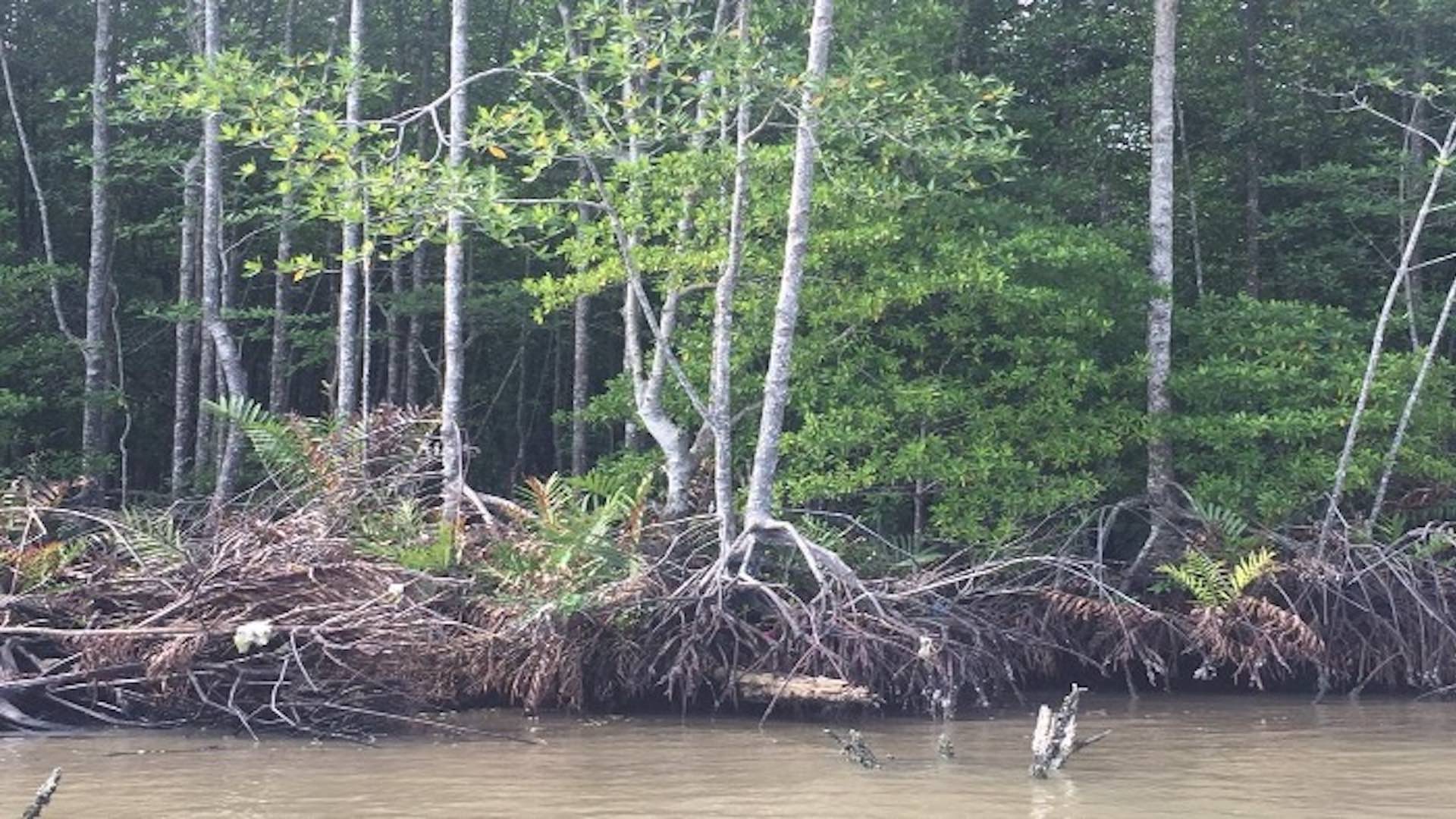Mangroves are valuable natural assets, distributed globally in approximately 120 countries. Each of these country are home to one or two species of Mangroves. About 65 “True mangrove” species (the plants that are found in the mangrove environment and not in terrestrial environment) are known from the Indo-West Pacific region and the Atlantic-East Pacific region. Interestingly, some mangrove forests in the Atlantic and East Pacific exhibit a higher rate of fertility and biomass than those in the Indo-West Pacific. Despite their spread across so many countries and their benefits to human, mangroves are at threat of deforestation and forest degradation. For instance, Asia has suffered the largest loss of more than 19 million ha in 1980’s due to change in land uses. Although Planet Earth is presently facing below 0.5 percent loss, we are daily losing 50 ha of mangroves forest. An area of approximately 111,046 hectares has been lost between year 1973 to 2000. Mangroves are an important part of the ecosystem that provides variegated services to living beings and environment itself.
As a climate moderator, mangroves serve the environment by capturing carbon dioxide like other salt marshes and seagrass meadows thus helping in mitigating climate change impacts. Besides carbon sequestration service, mangroves also provide benefits to local stakeholders along tropical and subtropical coasts. They are the environmental engineers, as they protect the urban infrastructure and shoreline from erosion and storm damage. Their above-ground structures releases stress and disturb benthic and epibiotic fauna by slowing down currents and attenuating waves. They are also a habitat for animals (fish and shrimp). Mangroves’ aerial roots are used by organisms such as oysters, barnacles, sponges and algae. Recent studies show that this species is also used for healing purposes. Thus, they provide hybrid services, rich fishing for fishermen and feeding grounds for predators. Keeping these important features of mangroves in focus, the human race should find strategies to preserve this forest ecosystem globally.
In recent years, many novel concepts have been tried to avoid or compensate for the large-scale losses through the implementation of effective mangroves management programs. Ecosystem-Based Management (EBM) is an environmental management approach that deals with the multimodal interactions within an ecosystem, including humans and animals. Considering the societal issues, EBM is playing a crucial role to enhance subsistence service. Another method “Ecosystem Design” (ESD) relates to implementation of designed ecosystems in degraded areas and their use in order to rehabilitate ecosystem service and ensure the sustainable use of these services. These Frameworks of mangrove management should be taken into consideration by the global platforms such as COP 27. Furthermore, there have been so many successful Mangrove Forest Restoration efforts. Nowadays, a lot of commercials for various items claim to plant trees when you purchase them. More and more of them explicitly mentions mangrove reforestation. This application is justified by the development of efficient checkpoints as well as the issuing of credentials that are recognized worldwide so that scams maybe avoided. There have been generals call to public for mass plantation however the International Union for Conservation of Nature Species Survival Commission (IUCN SSC) expressed their concerns about simplistic calls for mass planting, for four reasons:
- First, a focus on planting can distract from the priority of protecting existing mangroves.
- Second, studies have shown that the attempt to plant mangroves at world level fails.
- Third, most of plantation is focused on only one or two species of mangroves which are considered easier to plant which doesn’t featurize the ecosystem further.
- Fourth, planting and growing mangroves can be the time consuming as well as expensive one which needs a lot of funds.
The mangroves have multimodal functions, which are appreciated by many countries. The architecture of these trees prevents decaying fruits, dead wood, and fallen leaf litter from being washed away by the tide. Drifting algal wrack or seagrass blades are held inside and deposited by the tides in the woods. This enormous puddle of biological material -referred to as “blue carbon” works as a carbon sink. Mangroves are capable of capturing carbon up to 400 percent faster than their counterparts. Because of the long-term storage of the atmosphere carbon in the tree biomass, both above and below ground, these mangrove forests have become one of the most effective nature-based strategies for reducing climate change impacts. By initiating a nature-based agenda on mangrove sustainability, we can gain many advantages in the future.
Conference of parties is a global platform for discussing Climate change issue every year with the latest COP 27 held this year in Sharm el-Sheikh, Egypt. Almost 200 countries, joined the Conference of Parties (COP) on 6 November to 18 November in Egypt. The Mangrove Alliance for Climate (MAC) is an intergovernmental alliance signed at COP 27 in Egypt. The agenda of this alliance is to fast-track the recovery and restoration of mangroves. Headed by the United Arab Emirates (UAE) and Indonesia, its signatories include Sri Lanka, Australia, Japan, India and Spain. The mangroves play a crucial role in mitigating the pollution rate in the ecosystem. Hence, the promotion of mangroves protection agenda should be taken care of on this platform. MAC will have multiple platforms for interaction, featuring annual meetings to achieve both climate and national goals.


